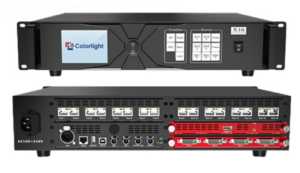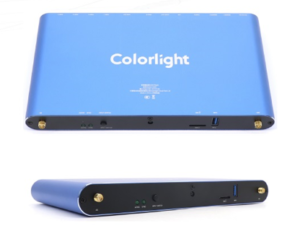6 Ways of LED screens to keep you connected

6 Ways of LED screens to keep you connected
There are 6 ways of LED screens to keep you connected as communication is critical for financial, educational and service institutions as people increasingly use digital and online banking services as maintaining personal contact is more important than ever.
You may be using social media, email and traditional advertising to communicate your services and hours of business, But are you reaching people every day as they pass by your branch? Indoor and outdoor LED screens are a proven way to stay in touch with customers and potential customers.
Here are 6 ways of LED screens to keep you connected and even expand your reach:
1- Provide updated information
Have offers and prices changed? When the roads are open? How about those new services and modern features? Your LED screen is a simple and effective way to let people know exactly what’s going on.
2- Make an emotional connection
Whether you sponsor events, offer scholarships, want to recognize personal accomplishments, or make presentations to clients, let people know that you care and that you want to make a difference in the community.
3- Engage and entertain customers
Indoor LED screens are an excellent way to reduce the expected waiting time, Show them information, animated artwork, or entertainment content when they see the screen, customers will not look at their watches.
4- Highlight your differences
One of the most important 6 ways of LED screens to keep you connected is to highlight what distinguishes you. For example, what makes your work different from anyone else in the city? Are you a customer service specialist? Are your prices very competitive? Do you have more ATMs than everyone else?
Displays are the perfect place to let customers know what sets you apart from the competition.
5- Show useful information
Make your sign the place where people search for weather information, alerts, quick headlines, or alerts in general.
6- Amplify your advertising
Direct your messages more than once, regardless of the media you use. This method is one of the 6 ways of LED screens to keep you connected, LED screens can repeat your advertisement or content extensively 15 to 20 times before it reaches the truth, and LED screens do this job well, In terms of handling and controlling LED screens, there are several points.
What is the Synchronous control?

Video processor X16 (Synchronous) – 6 Ways of LED screens to keep you connected
Synchronous control is a kind of traditional display control technology, through the computer and other equipment to control the LED display content and effect, This method usually requires professional control software and hardware to achieve, the control system needs to have high performance and high stability.
The main feature of synchronous control is good real-time performance, It can control the content and effect of the display screen in real time through computers and other devices to achieve a high degree of customization and flexibility.
In addition, synchronization control can also realize multi-screen linkage through network connection, so as to achieve large-scale and complex display effect.
For more information’s about EGYLED control devices, Click here.
What is the Asynchronous control?

Video Box (Asynchronous) – 6 Ways of LED screens to keep you connected
Asynchronous control is a display control technology based on the control card, through the control card memory data to achieve the LED display content and effect, Control cards often have high storage capacity and processing capacity, can store a large number of display content and effects, and through the call of different control templates to achieve a variety of different display effects.
The main feature of asynchronous control is simple and easy to use, do not need professional control software and hardware, just through the control card memory data to achieve the display effect, In addition, asynchronous control allows for more flexibility and versatility through wireless communication and other means to enable real-time updates of the displayed content.
How to programming LED screens?
One of the most important Technical points of LED screens, Whoever takes the step of writing the text and programming the LED screens must also coordinate the colors that appear on the screen, The final appearance of the screen must also be adjusted to display unique content on LED screens.
We can make the text move from the right of the screen to the left of the screen or vice versa and we can make it go from top to bottom and vice versa, We can control the appearance of the text in different and distinctive forms, The attached program has many endless effects, and we can rely on them to display our text on the LED screen.
Then set the speed at which the text starts appearing and then disappears with the time interval to make the text stop on important messages to highlight them.
You can also set a specific time to turn the screen on automatically and turn it off at specific times Also, the time at which certain content is displayed at specific hours and on a specific date After completing these steps, the text is saved.
In the end, after you are able to save the text, you can transfer it to the screen via a flash memory, and when installed, the screen will automatically save the new text on the internal memory of the control card and delete the old text.
To contact our technical team, click here.
The choice between LED display synchronous control and asynchronous control:
When selecting synchronous control and asynchronous control, you need to consider multiple factors, including application scenarios, display effects, control requirements, and control costs. Here are some common choices:
Application scenario
Synchronous control is usually used in scenarios that require real-time control and linkage, For application scenarios that require large amounts of storage and versatility, asynchronous control is often used.
Display effect
For complex and changeable display effects, synchronous control is usually used; for simple, stable displays, asynchronous controls are often used.
LED display synchronous control and asynchronous control requirement
For the control requirements requiring high precision and high stability, synchronous control is usually used, Asynchronous control is usually used for control requirements that do not require high precision and high stability.
Control cost
Asynchronous control is usually used in scenarios where control costs are high, For application scenarios where cost control is not the primary concern, synchronous control is often considered, It is important to note that the parameters and characteristics of the display need to be taken into account when choosing between synchronous and asynchronous controls.
For example, if the pixel density of the display is very high, precise control is needed to ensure the display effect; if the brightness and color saturation of the display are high, high bandwidth and processing power are required to achieve real-time control.
Whether LED display synchronous control and asynchronous control is selected, the compatibility, expansibility and reliability of the control software and hardware should be taken into account in the design and implementation of the control system.
At the same time, it is also necessary to note that different control methods may affect the service life and stability of the LED display screen, which requires proper maintenance and maintenance.
In a word, choosing the appropriate LED display control mode not only meets the requirements of application scenarios, but also takes into account the reliability and cost-effectiveness of the control system, Efficient, stable and reliable LED display control can be achieved by considering multiple factors and carrying out appropriate system design and implementation.
6 Ways of LED screens to keep you connected
For more information’s about EGYLED projects, click here.

